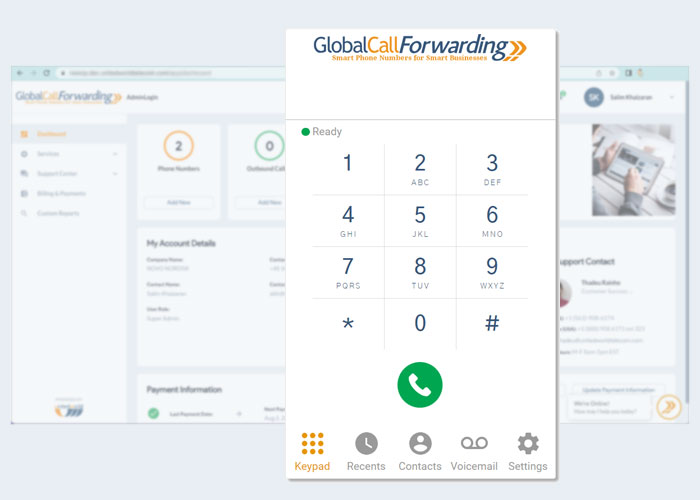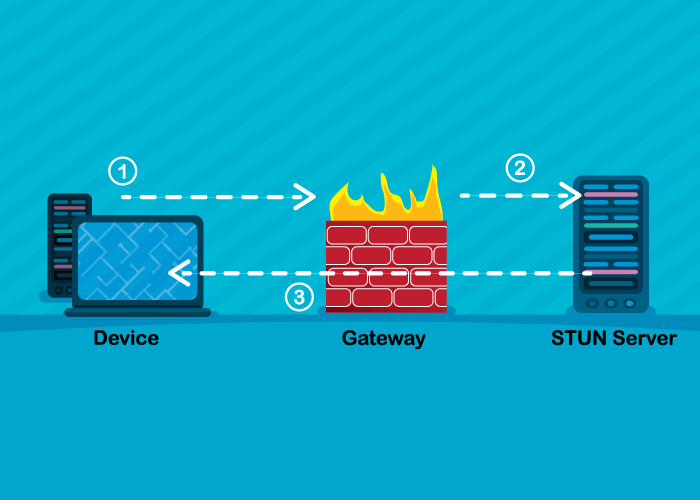Did you know that there are more than 330 million companies operating worldwide?
You might have started your business with local ambitions, but the Internet has created many opportunities for global expansion. At some point, depending on the nature of your business, you’ll want to tap into those opportunities and expand overseas.
While there are different ways to expand internationally, there will come a time when your business must communicate with clients and prospects over the phone.
If your sales and support operations are centralized, and your agents are making international calls from a regional office or global HQ, those calls might not get answered. But you can improve connection rates by showing a local number and caller ID when calling internationally.
This guide will show you how to make international calls with a local number and the associated benefits.
Benefits of Using a Local Phone Number to Call Internationally
Businesses can reap numerous benefits when calling internationally with a local number.
Basically, this concept means that your agents can show a local number that corresponds with the country they’re calling. For example, if your sales reps are sitting in the UK but making calls to France, they can still show a local +33 France phone number as their caller ID, rather than a +44 UK number.
Here are 7 benefits associated with making international calls using a local in-country caller ID:
1. Increase Connection Rates
People are more likely to answer calls from a familiar local phone number that they recognize.
Think about it — when you receive an incoming call from a foreign number that you don’t recognize, how likely are you to answer? You’ll probably ignore the call or send it to voicemail.
When your sales reps call internationally with a local caller ID, prospects are much more likely to answer the phone. You can boost connection rates and improve the ROI on salespeoples’ activities.
2. Give a Number to Receive Return Calls
When you use a dedicated local caller ID and phone number to call internationally, prospects and customers can reach you back at the same number. This means if your salespeople are calling prospects and one of those prospects doesn’t answer, that prospect can still return the call locally.
Your business can also customize how incoming calls are handled. This means that calls can either be routed directly back to the rep making the call, to a sales group, to an auto-attendant, or even to a voicemail.
3. Establish a Local Virtual Presence
International virtual numbers allow companies to establish a local presence in other countries. For example, the business could be situated in the United States, but still achieve a local presence throughout LatAm and EMEA using virtual numbers.
Clients feel more comfortable dealing with a local company. Thus, when they receive calls from a business with a local presence, they’re more likely to feel at ease.
What’s best is they don’t necessarily have to know your business is located in another country!
4. Eliminate the Need to Manage Contracts with Multiple Local Operators
While it’s possible to procure global phone numbers for your various offices and locations through multiple local operators, this is not the most efficient route. Managing contracts and services with different operators can be painstaking.
You’ll spend unnecessary time renewing contracts and managing service lines across different portals; not to mention, dealing with various levels of service quality.
We allow you to procure phone numbers from multiple countries to call internationally and manage your service in a single place.
5. More Cost-Effective than Having Local Offices
One way to make international calls with a local caller ID is to set up physical offices in other countries. But this involves various hurdles like registering your business locally, local hiring, leasing office space, etc. These cost money and take time.
However, you can still have a local business presence without having employees and local office spaces, thanks to international phone numbers.
6. Build Local Trust and Loyalty
Consumers oftentimes trust local businesses over international ones. By making calls with a local caller ID, you encourage clients to trust and do business with you. Build trust with new markets by using local phone numbers for your outbound calling efforts.
7. Serve Multiple Locations from a Single Office
Rather than setting up multiple offices for the same purpose, situate your sales and support reps in a central location. They can serve multiple locations by changing their caller ID depending on where they’re calling. This improves ROI on agents’ performance and lets businesses do more with less.
How to Make International Calls with a Local Caller ID
Provided you have international dialing capabilities with your service provider, the process of making an international call is quite simple. You just need to dial the + sign, followed by the country code, and the subscriber number.
If you don’t have international calling enabled through your service provider, you’ll need to sign up for a calling service that allows international dialing. However, by doing so, you will not necessarily be able to show a local in-country caller ID. Your caller ID will likely display your subscriber number.
But still, you can achieve this in two ways. The first, more limited option, is by getting a local SIM card.
- Not flexible – you can’t change your caller ID depending on where you’re calling.
- Need to install a physical SIM card in your phone.
- Expensive compared to a cloud phone service.
The second option is to use a local international calling solution like the one offered by United World Telecom. We allow you to easily buy local phone numbers to manage both incoming and outgoing calls.
In essence, you make international calls with our services and show a local caller ID corresponding to the country or region you’re calling.
Once subscribed, follow these steps to show a local caller ID when calling internationally:
1. Add a local or national phone number in the country you’ll be calling, along with an outbound calling plan. Local numbers start at just $7.95 per month and outbound calling plans start at $25.
2. Sign in to your dialer or softphone. In this example, we’ll be showing you how to call internationally using our proprietary dialer.

3. Click on settings and then choose the caller ID corresponding to the local phone number you would like to use for your international outbound calls.
4. Using E.164 format, dial the destination number that you would like to call.
It’s really quite simple and you can set it up in just a few minutes.
More About United World Telecom
We have been providing international calling solutions since 1996. Thousands of clients rely on our solutions to receive and make international calls with local phone numbers.
To get started, reach out to us 24/7 or sign up online.
















